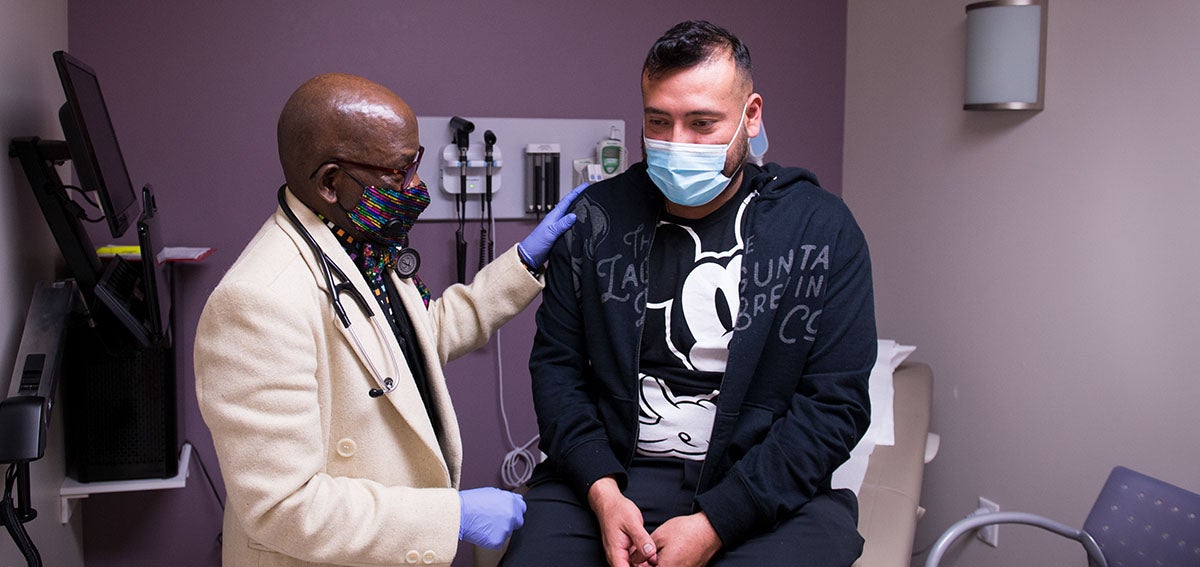
A new rule meant to shine a light on hospital prices nationwide may instead be revealing the sometimes glacial pace of change in the sprawling, $4 trillion American health care system.
The Trump administration rule, which took effect January 1, requires hospitals to disclose the reimbursement rates they privately negotiate with insurers and the discounts they offer self-paying patients. Hospitals are required to publicly share the data with an online tool, according to a KFF (Kaiser Family Foundation) report.

When it is accessible, the pricing data offers a startling insight into who pays what at the hospital. It’s a glimpse behind the curtain, “the first full look inside the confidential deals that set health care rates for insurers and employers covering more than 175 million Americans,” the Wall Street Journal reported under the bylines of Tom McGinty, Anna Wilde Mathews, and Melanie Evans.
The intent of the rule is for hospitals to disclose prices in a way that a typical consumer can understand, thereby encouraging them to shop for lower prices and select the hospitals offering the lowest out-of-pocket costs. Transparency advocates say that such behavior could increase competition, moderate drastic price variations within geographic markets, and reduce prices.
Fighting to Keep Rates Secret
The 70 procedures whose prices must be disclosed range from surgeries to psychotherapy sessions, though hospitals are free to disclose any other health care services as well. Last year, the American Hospital Association sued to block implementation of the rule. Though some stakeholders have long argued that negotiated rates are proprietary trade secrets, the legal basis for this claim is dubious, suggests research conducted at UC-Hastings College of Law with support from CHCF. The hospital association lawsuit failed, clearing the way for price transparency requirements to take effect.
Critics say a major weakness of the rule is its enforcement provisions. The maximum fine for violations is $300 a day. “That’s a flea on an elephant financially if you’re looking at a large multimillion- or multibillion-dollar system,” Niall Brennan, president and CEO of the Health Care Cost Institute, told Caroline Lewis of Gothamist.
Indeed, hospitals appear slow to share rates as required, according to a study in the journal Health Affairs last month. Authors Morgan Henderson and Morgane C. Mouslim examined the websites of the largest US hospitals. They found that “of the 100 hospitals in our sample, 65 were unambiguously non-compliant.”
Several hospitals posted their prices but then used special coding embedded on their websites to keep them from appearing in search results on Google and other web search engines, according to the Journal’s March 22 story by McGinty, Mathews, and Evans.
Though this isn’t the first time federal rules have required hospitals to post prices, it is the first time the federal government is requiring they present easily accessible pricing information to consumers.
The Track Record of Transparency
Earlier, the federal government and states, including California, have attempted to use price transparency to lower costs. Since 2019, federal rules have required hospitals to share their “chargemaster sheets,” which capture “the costs of each procedure, service, supply, prescription drug, and diagnostic test provided at the hospital, as well as any fees associated with services, such as equipment fees and room charges.” The helpfulness of these long and unwieldy lists is limited by the typically inscrutable codes they use, such as “ABBOTT TECNIS TORIC ASPHERIC IOL ZCT300 21.0D SE 3.00 CYL” instead of plain English words that consumers could understand.
The listed costs don’t reflect the fees that consumers and health insurers shell out. Chargemaster prices are like the sticker price for a car — an inflated figure paid by almost no one. Chargemasters, as Health Affairs noted, “bear little relationship to market rates.”
California has required hospitals to disclose their chargemasters since 2004 and has worked to make that information clearer for consumers. The state added a requirement for reporting charges for 25 common outpatient procedures in 2006, which many hospitals have voluntarily expanded upon with their own web-based tools for out-of-pocket cost estimates. The creation of a new database with detailed information about negotiated payment rates is currently underway.
The recent federal rule is a significant shift from previous transparency efforts. For instance, on the website of Sacramento-based Sutter Health, a few clicks will take consumers through the process of selecting a service by name (such as a CT scan), a location, and an insurer, and will then offer an estimated price for the service.
But experts are unsure the new rule will reduce health care costs as intended. “It’s not likely that my neighbor — or me, for that matter — will go on and look at prices and, therefore, dramatically change decisions about where to get care,” Zack Cooper, an associate professor of public health and economics at Yale University, told Julie Appleby of Kaiser Health News.
The rules could affect pricing in other ways, such as by “shining a light on the insanity of US health care pricing,” Brennan of the Health Care Cost Institute told the Journal. In a February article, McGinty, Mathews, and Evans found that cesarean sections at Sutter hospitals could cost $6,241, or $29,257, or $38,264 or $60,584, depending on payer. That type of information was not typically shared before January 1.
In No Hurry to Comply
The largest hospitals did not meet the transparency requirements by the deadline of January 1, Henderson and Mouslim found in their study. They discovered that:
- 12 out of 65 of the noncompliant hospitals (18%) had not posted any files or provided links to searchable databases
- 53 out of 65 (82%) either did not include the negotiated rates with the name of the payer and plan clearly associated with the charges (46 out of 53), or were in some other way noncompliant (7 out of 53)
There is currently no comprehensive, public source of information on compliance with the new federal rule for California’s acute care hospitals.
How to Hide Prices with Computer Code
The new transparency rule requires hospitals to make their prices easy to find and access. Yet after a search of more than 3,100 sites, the Wall Street Journal found that hundreds of hospitals embedded code in their websites that prevented Google and other search engines from locating the pages.
“It’s technically there, but good luck finding it,” said Chirag Shah, an associate professor at the University of Washington who studies human interactions with computers. “It’s one thing not to optimize your site for searchability, it’s another thing to tag it so it can’t be searched. It’s a clear indication of intentionality.”
Hospitals interviewed by the Journal denied they were intentionally hiding the information from consumers. The blocking codes were initially found on webpages for 307 hospitals, and after they were contacted by the Journal, the blocking codes were removed by 182 hospitals.
Will Transparency Work?
New US Secretary of Health and Human Services Xavier Becerra told Congress he plans to strictly enforce the transparency rule. At his nomination hearing, Becerra* testified that under his supervision, HHS will “do robust enforcement of price transparency.” As California attorney general, he brought a groundbreaking antitrust lawsuit alleging Sutter Health used its considerable market share to inflate the prices it charged insurers and employers. Sutter settled the suit last year for $575 million.
However, disclosure alone is unlikely to change how much health care costs in the US, Ge Bai, an expert on health care pricing at Johns Hopkins Bloomberg School of Public Health, told Washington Post reporter Alexandra Ellerbeck. “I don’t think it’s going to be an earthquake in terms of pricing, but it’s a first step in the right direction,” Bai said.
Authors & Contributors

Heather Tirado Gilligan
Heather Tirado Gilligan is a journalist who has written for publications including Slate, The Nation, CNN, and the Washington Post. Previously, she was executive editor of the California Health Report, a news nonprofit covering disparities in health and access to health care. Heather received a master’s degree in journalism from UC Berkeley and a PhD in English from Rutgers University, where she studied race in American culture.





